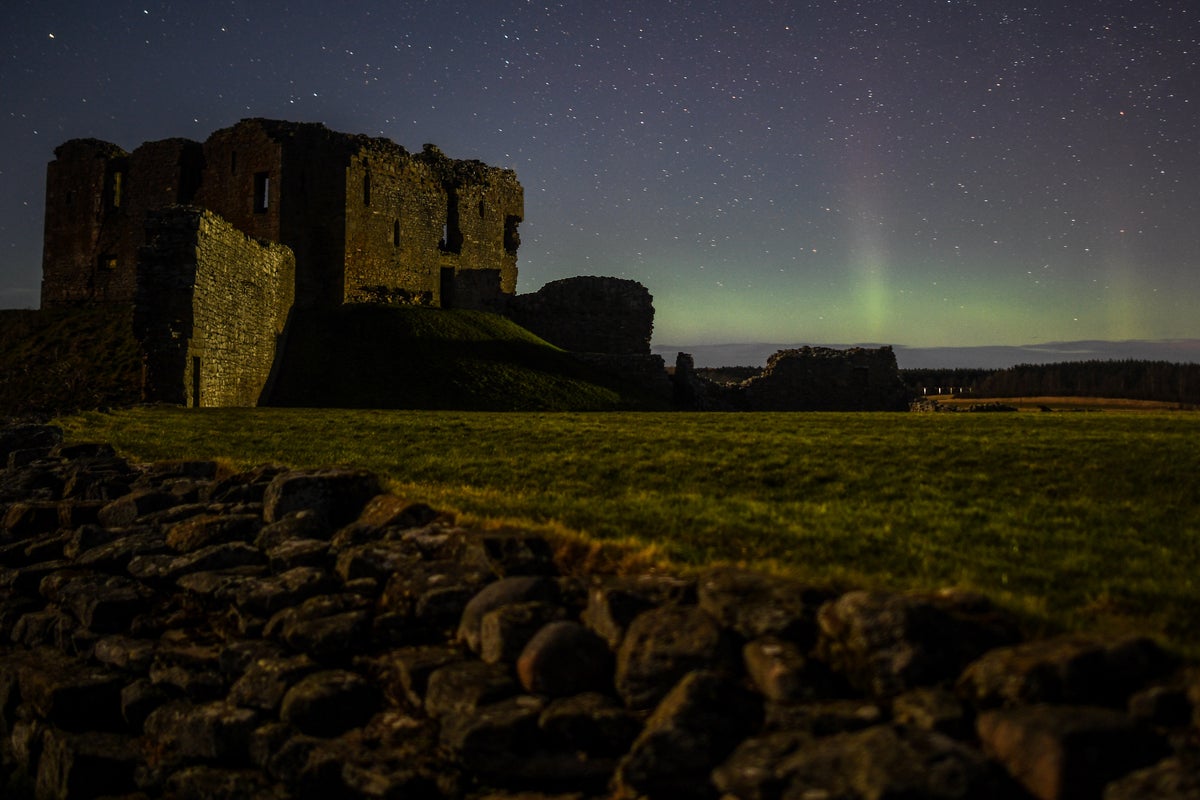
The northern lights illuminated UK skies for a second night in a row between Monday and Tuesday, with people across the country sharing images of spectacular sightings of the aurora borealis.
The Met Office said the aurora was “widely seen across the UK” on Sunday night as a result of a powerful solar storm, and had alerted the public to there being “another chance” to see the northern lights on Monday night in places where skies were clear.
And many Twitter users took advantage of the opportunity, sharing photos of the space weather phenomenon on Tuesday morning.
Auroras are caused when charged particles from the sun interact with the Earth’s geomagnetic field.
In the northern hemisphere, this is called the aurora borealis or northern lights, while in the south the phenomenon isreferred to as aurora australis.
Several space weather monitoring organisations, including the National Oceanic and Atmospheric Administration, said on Monday that a blast of superhot material was hurled from the sun late last week travelling towards Earth at nearly 2 million mph.
Auroras were spotted on Monday in several parts of the world, including in the skies across Europe, the Americas, and Asia.
The northern lights viewings last night were limited to some southern parts of the UK, including Somerset and Wiltshire, as well as northern parts due to the “overall weaker geomagnetic storms” seen overnight, according to the Met Office.
The colours seen in the night-time sky in photos shared by amateur photographers varied from pink to purple to green.
The various colours are a result of a number of factors, including the altitude and the kind of gas molecules present in the Earth’s upper atmosphere at that time.
The pink hue is produced by nitrogen molecules at altitudes of about 100km.
Oxygen atoms high in the atmosphere are known to produce a red glow, while a green hue may be the result of charged particles striking oxygen at lower altitudes.
Hydrogen and helium molecules are known to produce blue and purple auroras in the northern skies.
The auroras spotted this week are the result of the third severe geomagnetic storm since the current 11-year solar cycle began in 2019, according to the US’s NOAA, according to which the solar storm cycle could peak in 2024.







